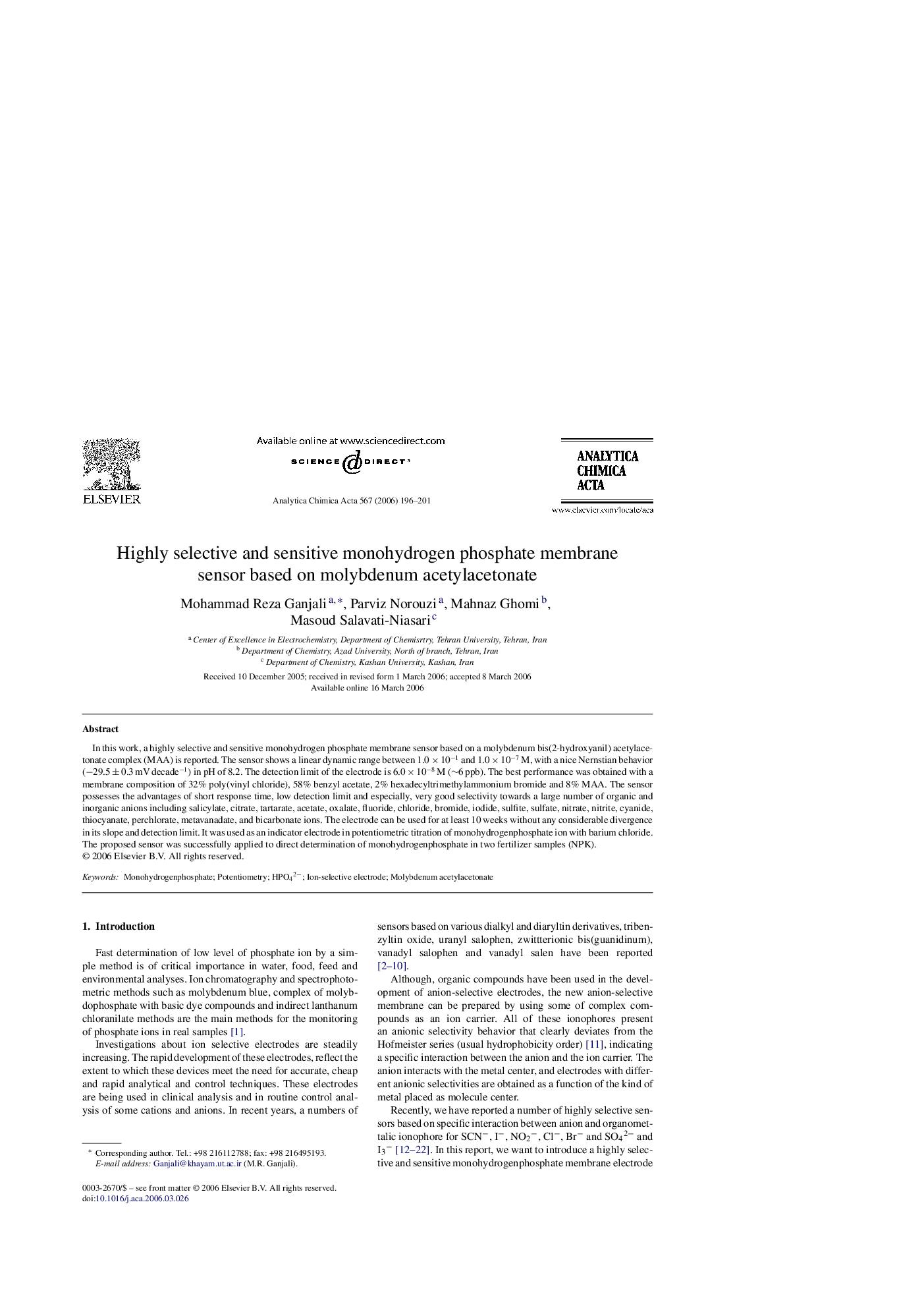| Article ID | Journal | Published Year | Pages | File Type |
|---|---|---|---|---|
| 1172439 | Analytica Chimica Acta | 2006 | 6 Pages |
Abstract
In this work, a highly selective and sensitive monohydrogen phosphate membrane sensor based on a molybdenum bis(2-hydroxyanil) acetylacetonate complex (MAA) is reported. The sensor shows a linear dynamic range between 1.0 Ã 10â1 and 1.0 Ã 10â7 M, with a nice Nernstian behavior (â29.5 ± 0.3 mV decadeâ1) in pH of 8.2. The detection limit of the electrode is 6.0 Ã 10â8 M (â¼6 ppb). The best performance was obtained with a membrane composition of 32% poly(vinyl chloride), 58% benzyl acetate, 2% hexadecyltrimethylammonium bromide and 8% MAA. The sensor possesses the advantages of short response time, low detection limit and especially, very good selectivity towards a large number of organic and inorganic anions including salicylate, citrate, tartarate, acetate, oxalate, fluoride, chloride, bromide, iodide, sulfite, sulfate, nitrate, nitrite, cyanide, thiocyanate, perchlorate, metavanadate, and bicarbonate ions. The electrode can be used for at least 10 weeks without any considerable divergence in its slope and detection limit. It was used as an indicator electrode in potentiometric titration of monohydrogenphosphate ion with barium chloride. The proposed sensor was successfully applied to direct determination of monohydrogenphosphate in two fertilizer samples (NPK).
Related Topics
Physical Sciences and Engineering
Chemistry
Analytical Chemistry
Authors
Mohammad Reza Ganjali, Parviz Norouzi, Mahnaz Ghomi, Masoud Salavati-Niasari,
